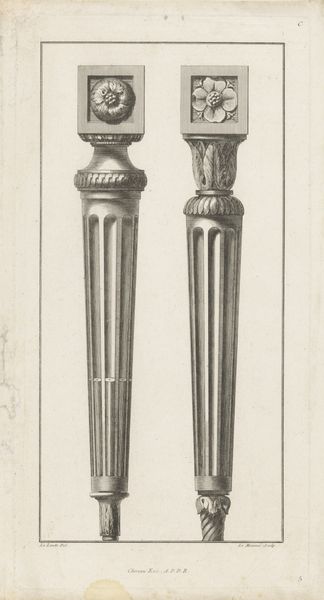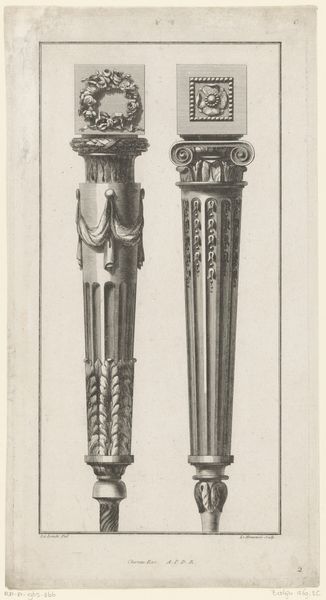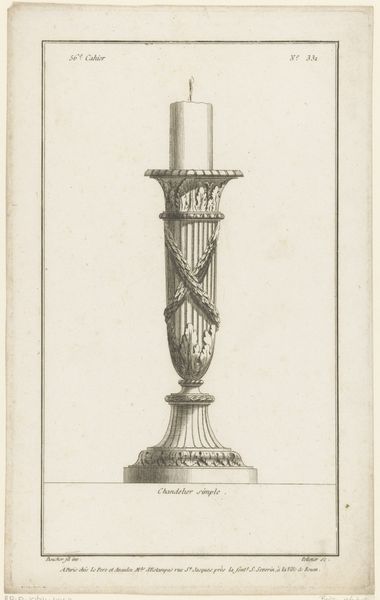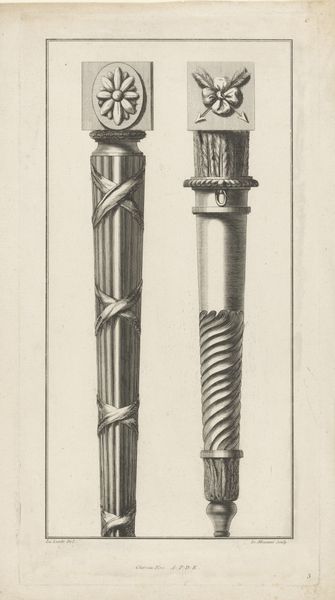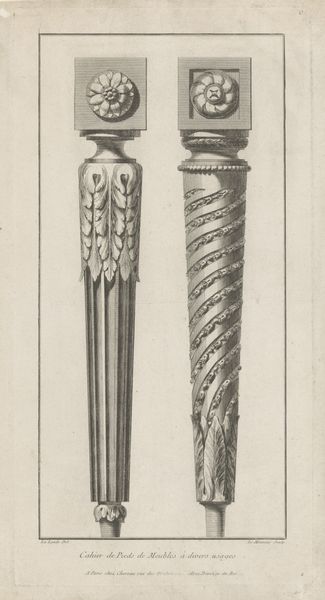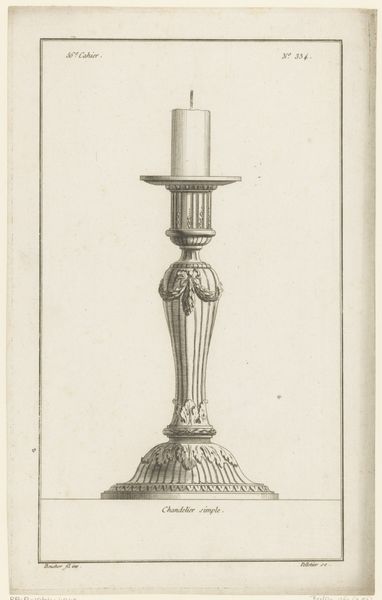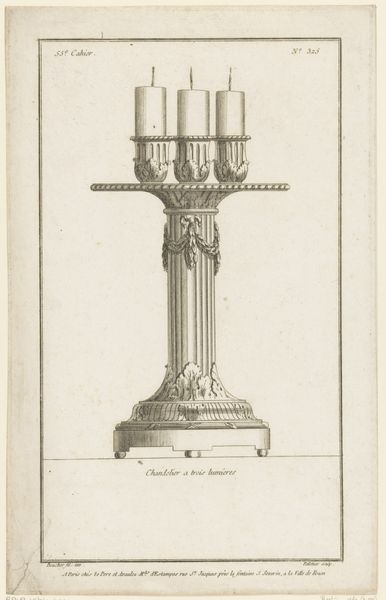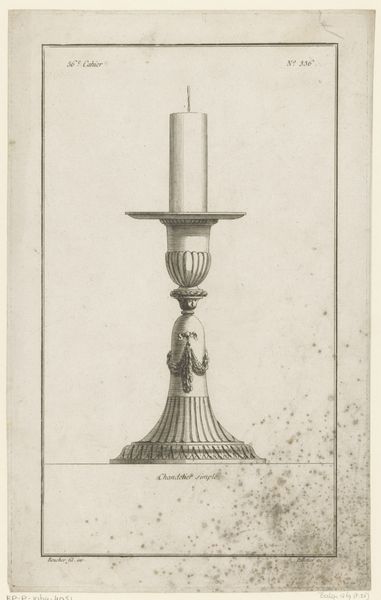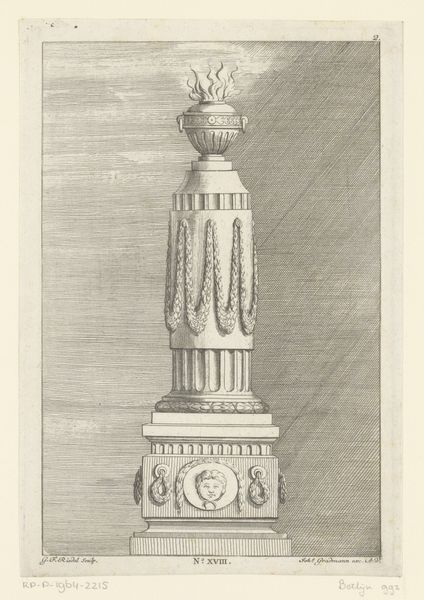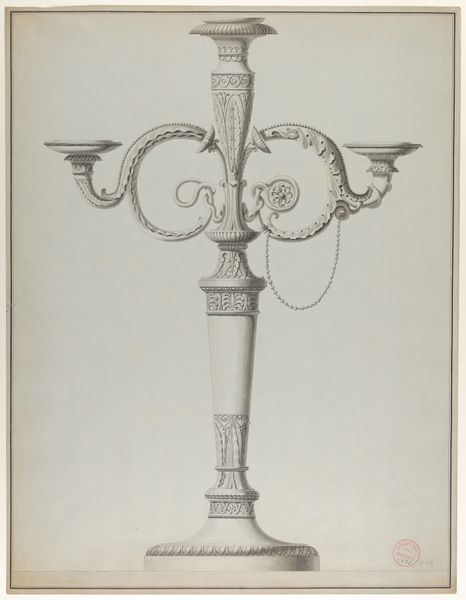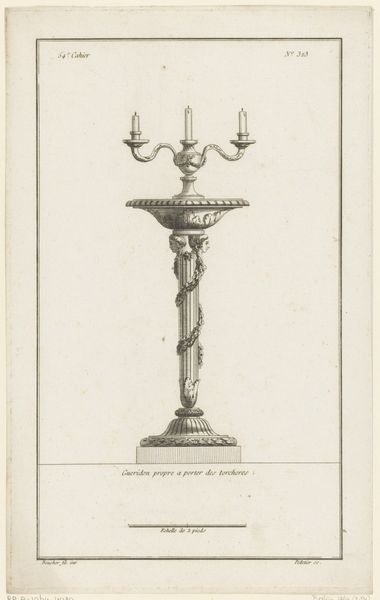
drawing, paper, pencil
#
drawing
#
neoclacissism
#
aged paper
#
toned paper
#
furniture
#
paper
#
form
#
pencil
#
line
Dimensions: height 373 mm, width 193 mm
Copyright: Rijks Museum: Open Domain
Curator: Here we have “Two Furniture Legs,” a pencil drawing on paper by C. Le Meunnié, created around 1784 to 1785. It's held here at the Rijksmuseum. What strikes you about this piece? Editor: Elegance. It's all about restrained ornamentation, that crisp delineation against the toned paper gives such clarity to those Neoclassical motifs. It feels… almost architectural, like miniature columns. Curator: Exactly! The drawing is firmly rooted in Neoclassicism, reflecting a resurgence of interest in classical Greek and Roman forms, which heavily influenced design and fashion of the period. Editor: The floral wreath, and the acanthus leaves… They aren’t just decorative, are they? Curator: Certainly not! Acanthus leaves symbolize endurance and immortality, harkening back to ancient Greek funerary monuments. Wreaths have long represented victory, or honor, here perhaps an homage to the patron. But its hard to know exactly for what piece these were proposed for. Editor: The level of detail for functional objects is captivating. They feel almost sacred in their presentation. What do drawings such as this tell us about design in this era? Curator: Pieces like these played a crucial role in disseminating new styles and influencing craftsmanship. They would circulate among workshops, providing models for artisans and cabinetmakers. It served a clear function in society at the time. Editor: And looking at it now? How do we use these references today? Curator: In some ways we're now divorced from some of these more historical contexts. However, even without that conscious link, we can be deeply impacted, feeling grounded or solemn depending on what that symbol evokes for us. Editor: Seeing these legs now, suspended, feels like a glimpse into the values of a particular era, offering us continuity through symbols. Curator: And they still function, don't they? As evocative prompts to new ideas in our own designs.
Comments
No comments
Be the first to comment and join the conversation on the ultimate creative platform.
